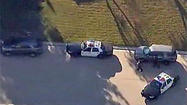Written by: Greg Ellifritz
Did you see the news about last week’s shooting at a Roswell, New Mexico middle school? It didn’t get wide media coverage (likely because of a small body count). A student entered the school before classes began with a shotgun in a duffel bag. He fired three rounds, injuring two people before a teacher commanded him to drop the gun. He was apprehended by an off duty police officer who had been dropping his kids off at the school. Read more about it at the link below:
2 youths wounded by student in Roswell school shooting
Even though there hasn’t been an in-depth analysis released by the school or police, there are a couple very important points to discuss:
1) Timing- The shooter targeted a group of students who were waiting in the gym before school started. Numerous previous school shooters have employed an identical strategy, targeting victims in the chaos that occurs when fellow students haven’t yet made it to class in the morning.
The main problem here is twofold…
– Schools rarely practice lockdown drills or shooting responses in the pre-school hours. Responses during this time are always more chaotic and less practiced.
– Access control is limited. Everyone expects lots of people to be entering the school, doors are rarely monitored, and students carrying large bags are not suspicious.
School personnel should be stationed at every door as students arrive and be trained to look for suspicious students who might be carrying weapons, extra ammunition, and/or restraints in large bags. Administrators should make sure lock down drills are practiced before and after school as well as the during the school day.
2) Long guns- The trend with active shooters in general and school shooters in particular has been to use rifles and shotguns more often than not. If you anticipate responding to an active shooter event, you will most likely be engaging in a gunfight against an opponent with superior weaponry. You should consider developing a set of personal tactics that will allow you to more effectively neutralize a long gun or minimize its advantages.
3) School security officers did not play a role in stopping the shooter. I don’t know if the security guards were armed or not here, but the shooter was stopped by a courageous unarmed school teacher. A large number of these shooters are stopped by unarmed citizens, not security guards or cops. If your school employs unarmed security guards, it isn’t really “security.” Urge your school board to employ armed security, hire school resource officers, or allow armed teachers. The most effective response to a school shooting is an armed “good guy.”
4) An off -duty police officer (dropping off his children) took control of the event after the shooter surrendered. If you are a police officer, do your kids’ teachers know it? Would the recognize you if you responded in an off duty capacity? If you regularly pick up or drop off your children at a school, it would be a good idea to introduce yourself to school staff so that they will recognize you in an emergency and will allow you to assist if necessary.
That goes for non-cop parents as well. If you are armed when dropping off your kids at school and find yourself in the middle of a school shooting, what would you do? The school staff will likely immediately lock all outside doors. You may not be able to get in unless the school staff recognizes you. Have you made the effort to get to know any of the school staff?
Another point for my cop readers, if you are on duty and responding to a school shooting, you may encounter an off duty cop or armed citizen. You have to consider their presence in your response plan.


